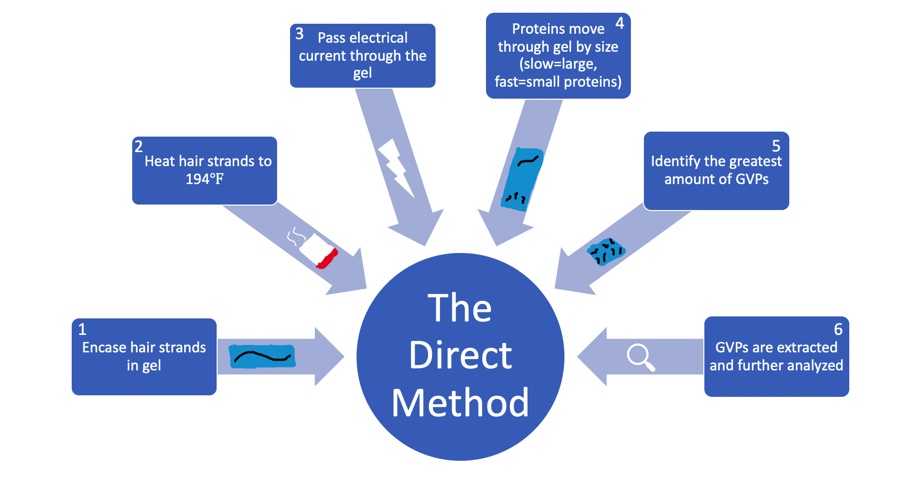Currently, we can only use hair to identify people through the much-admired DNA. But scientists are now researching how a major component of hair may also be unique enough for identification.
Hair – we all have it. It clogs up the shower drain and randomly sticks to our clothing. And thanks to pioneering scientists, we can even identify the culprit leaving behind their messy strands of hair! How? The hair’s root contains nuclear DNA (nDNA), which is what forensic scientists normally use to identify a person’s DNA profile.
Without the root, scientists rely on mitochondrial DNA to narrow down the hair’s source to a maternal line of people. Though this can be useful to create leads for law enforcement, recovering and sequencing the individual nDNA is most ideal. But what if you could individualize the hair’s source without DNA? Dr. Zheng Zhang and his team began looking into this alternative line by studying the composition of hair.
Almost 95% of hair is made up of a protein called keratin, which acts as a natural defense system for hair that resists degradation from the environment. Zhang hypothesized that he could use this protein to identify individuals by looking at the natural genetic differences between people. These differences, only identifiable after chopping up the protein into its genetically variant peptides (GVPs), change keratin’s structure and protein sequence without changing its function.

Normally to identify a person at a crime scene using hair, we extract the nuclear DNA (nDNA) from the hair’s root. However, while DNA is extremely useful, it has a weakness: a tendency to quickly degrade. If a strand of hair is left out in the sun for too long, the DNA mutates from its original sequence, thus no longer matching its donor. Keratin, and the GVPs that comprise it, could provide a route around DNA’s affinity to degradation. Zhang first needed to find a way to extract and separate the different GVPs in keratin, which his team accomplished using what they called the Direct Extraction Method.
As the title suggests, this method involves directly extracting the proteins from different amounts (or lengths) of hair. The hairs were cut, heated, incubated and soaked in water before digesting into peptide pieces. His team then ran the digested hair on a PAGE gel. By flowing electricity through the gel, the negatively charged proteins move towards the positively charged end at different speeds. Large proteins travel slowly and don’t make it far down the gel while smaller proteins travel faster and show up as bands. These bands can be cut from the gel and put into a sensitive instrument like a mass spectrometer to identify the protein profile via the separated GVPs present.

After rigorous experimentation, they were able to determine that the 5cm length yielded the greatest amount of GVPs and created a protein library of all the peptides they saw in their extraction process. This library would eventually serve as their identification basis, like how you search for a DNA profile in the Combined DNA Identification System or CODIS database.
With further study and analysis, the team found that this method worked well down to a 1-cm long strand of hair. This is huge – not all hairs found at a crime scene are going to be long and easy to work with. More research is still needed to determine how exactly these GVPs can be used for identification, but Zhang has laid a valuable foundation in determining the greatest recovery of GVPs. These initial steps will hopefully lead to increased scientific interest into the forensic potential of keratin GVPs.
| Title | Sensitive Method for the Confident Identification of Genetically Variant Peptides in Human Hair Keratin |
| Authors | Zheng Zhang M.D. Meghan C. Burke Ph.D. William E. Wallace Ph.D. Yuxue Liang Ph.D. Sergey L. Sheetlin Ph.D. Yuri A. Mirokhin Ph.D. Dmitrii V. Tchekhovskoi Ph.D. Stephen E. Stein Ph.D. |
| Journal | Wiley Online Library |
| Year | 2019 |
| Link | https://onlinelibrary.wiley.com/doi/10.1111/1556-4029.14229 |

This is so interesting! I bet researchers from a couple decades ago never thought hair would be the next big breakthrough. I wonder what will be next that we haven’t even started considering yet?
LikeLiked by 1 person